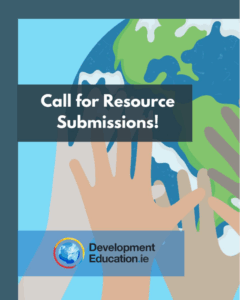
Illustration by Dylan Creane
If you’re interested in implementing games into your development education and global citizenship education practice look no further as I have rounded up my 10 favourite games. A list, by Niffy Olamiju.
Learning about global injustice issues and is an important but not always enjoyable journey as we deal with often complicated and uncomfortable subjects which make it difficult to really engage with material.
Gamification is an education technique that applies the concepts of game design to make education more engaging for learners. If you’re interested in implementing games into your development education proactive look no further as I’ve rounded up my 10 favourite games to include in your development education practice.
1. Go Goals

SDGs: Introduction to the SDGs
Players: 4-6 players
Format: Board Game
Target Group: children aged 8 – 10
Main Themes: Sustainable Development Goals
Go Goals is a fun and easy board game that provides an easy introduction to the SDGs through the use of a snake and ladders esque trivia board game. The game is very easy to implement in a classroom setting and can be downloaded from the website.
2. Majorians & Minorians

SDGs: Goal 1: No Poverty , Goal 17: Partnership for the Goals
Players: Suitable for medium to large groups
Format: role playing game
Target Group: Students aged 14 and above, youth groups, adult learners
Main Themes: Intercultural Awareness, Aid, Poverty, Decolonisation
This role play game splits users into two groups representing two countries the wealthy majorians and the poorer minorinans. The majorians after developing their own country and looking out for their interests are looking to help the underdeveloped minorians while the minorinas recovering from decades of oppression are looking for new ways to rebuild their sense of identity and improve what is left of their country.
The game touches on the topic of aid and the relationship between donor and recipient countries encouraging participants to challenge their perceptions and see things from a different perspective.
The game is fairly easy to play only requiring downloadable instructions. This particular lesson plan is from New Zealand and is adapted for their unique demographic however it contains helpful discussion points which can easily be adapted for any group.
3. Project Honduras
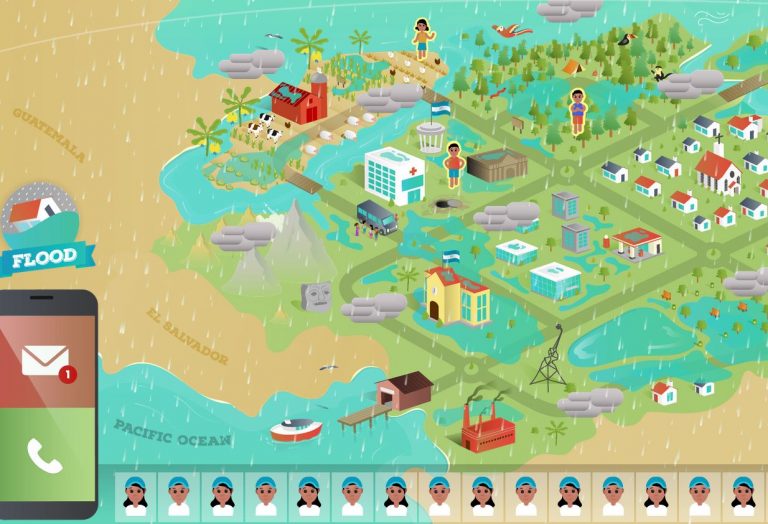
SDGs: Goal 13: Climate Action , Goal 17: Partnership for the Goals
Players: Can be played individually, in groups of two or three together as a large group
Format: Digital simulation game available online
Target Group: Primary School Students, Junior Cycle
Main Themes: Disaster Risk Reduction, Climate Change
Project Honduras is the award winning game by Trocaire which allows players to learn about Climate change and the disaster risk reduction that often accompanies. The game is based on Trocaire’s own experience in Honduras working with communities who have been affected by climate change. Players can take on the role of either Javier or Andrea based on two real life young climate change activists who are in charge of the team of volunteers for different climate change emergencies. Players need to allocate volunteers and earn enough stars to progress to the level.
This game is another accessible one needing only a computer or tablet and internet connection to play. Trócaire have also provided a handy lesson pack to the game making it even easier to incorporate into lessons. Project Honduras and the accompanying reaching resource are available from Trocaire’s website.
4. Brothers Across borders
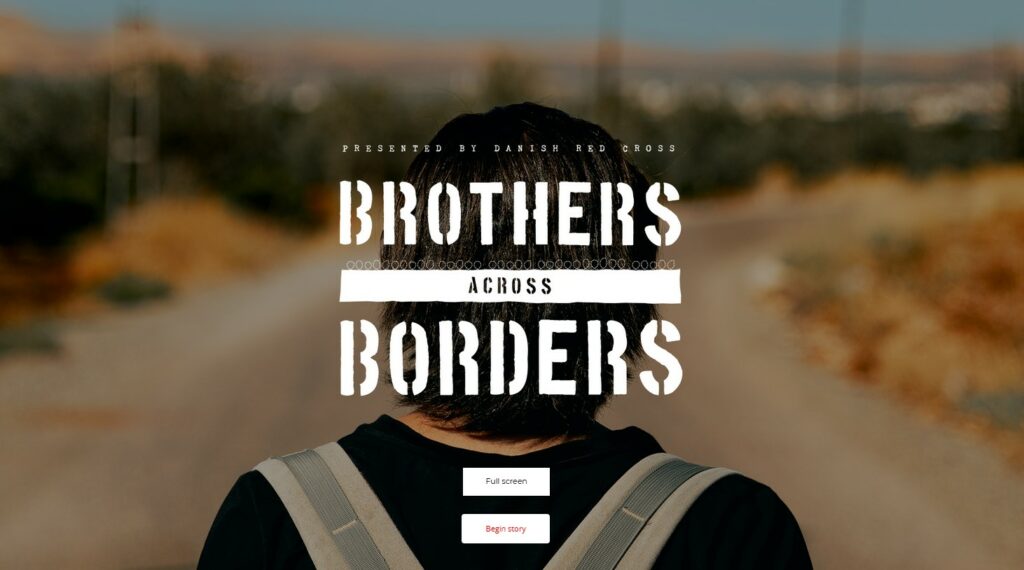
SDGs: Goal 10: Reduce inequality within and among countries; Goal 16: Peace, Justice and Strong Institutions,
Players: Can be played individually, in groups of two or three together or as one large group
Format: Interactive Film
Target Group: Students aged 12 – 17
Main Themes: Migration, Refugees, War and Conflict
Brothers Across Borders is an interactive film developed by 15 Red Cross and Red Crescent societies and funded by the EU Regional Trust Fund in response to the Syrian crisis.
The film is centred around the journey of a young Syrian refugee who makes the long journey to Turkey to find his brother who had left before him. The film takes users through his journey where they must make the tough decisions and witness the conditions many refugees must face in their search for safety.
The film can be accessed from any device with an internet connection and also features a handy resource guide for teachers with exercises and prompts to further engage students in their learning journey.
5. Harvest For The Future
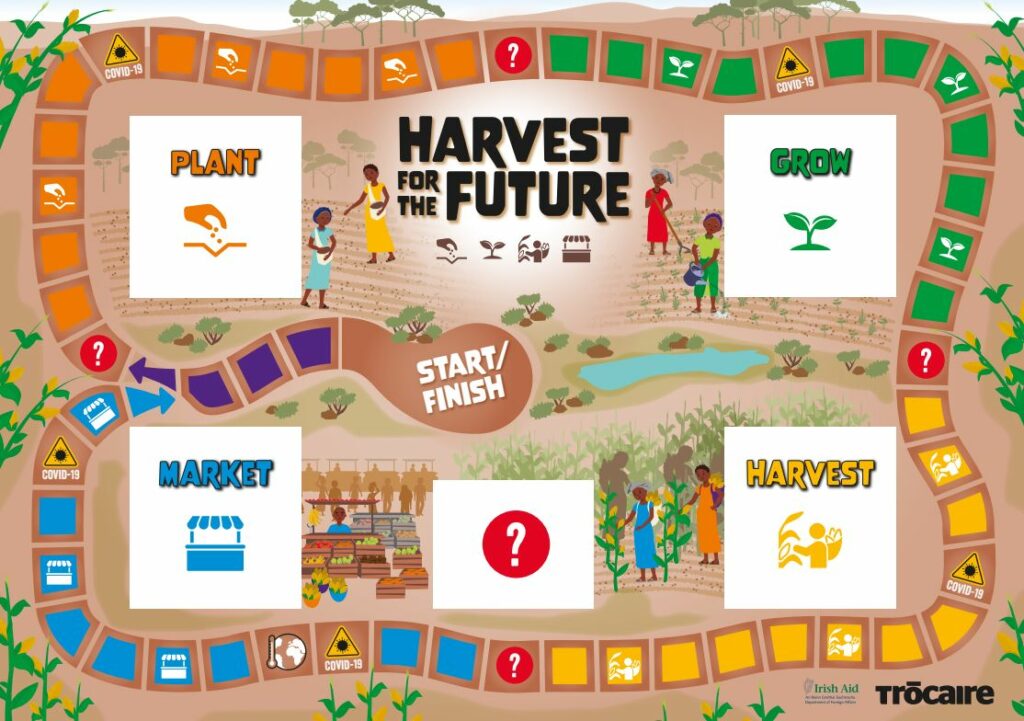
SDGs: Goal 1 No Poverty; Goal 2 Zero Hunger; general introduction to the SDGs
Players: 3-6 players
Format: Board Game
Target Group: Senior Primary and Secondary School Students
Main Themes: Agriculture and Farming
In this board game players take on the role of farmers in the Global South and are challenged to purchase, grow, harvest and sell their crops before the time runs out and the season is over.
Developed by Trócaire, the game introduces younger students to some of the realities of food insecurity and also acts as a fun and engaging introduction to the SDGs in the form of question cards. The game has both a primary and secondary school option and is available for download.
6. African Farmer Game
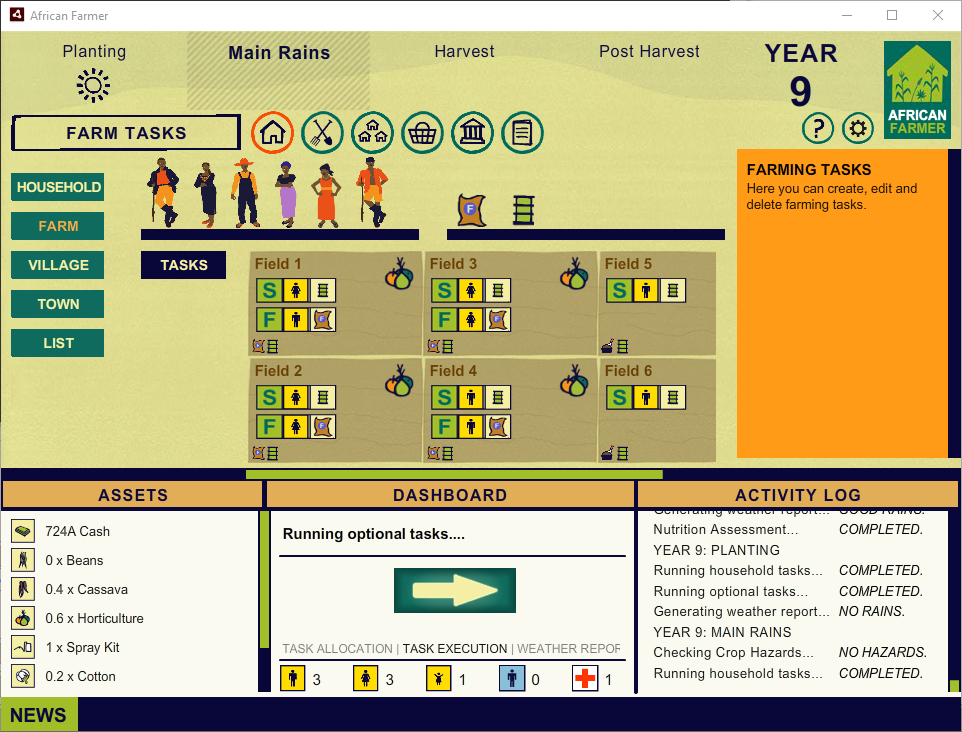
SDGs: Goal 2 Zero hunger
Players: Single Player or Multiplayer with a game manager
Format: Digital Simulation Game
Target Group: Adult Learners
Main Themes: Agriculture and Farming
Similar to the Harvest for the Future, African Farmer Game gives users an insight into food insecurity in rural Africa.
Created by the Future Agricultures Consortium, the STEPS Centre and the University of Sussex the game was inspired by classic development games like the Green Revolution Game and Africulture. The African Farmer game goes beyond textbooks and illustrates the varying realities of life in poverty. As the designers say themselves
“the simulation demonstrates clearly the complexity of decision-making, even in a simplified model of an agricultural society, and helps sensitise players to the impact of agrarian change from the small farmer’s point of view”.
The game boasts an easy to use interface as it is available in single and multiplayer modes and can easily be incorporated into lessons or workshops. Check out The African Farmer Game online.
7. Pandemic

SDGs: Good Health and Wellbeing
Players: 2-4 players
Format: Board Game
Target Group: Adult Learners
Main Themes: Pandemics, Disease Control, Public Health
Although Pandemic was not developed as an educational game it still serves as a good tool for illustrating the effects of a pandemic and the challenges and inequalities of the global public health system.
- Players take on the role of a team of public health officials who are challenged with containing a series of deadly viruses which have broken out around the world.
- The game is based on chance and strategic planning as viruses appear and reappear in different key locations around the world.
- The game is particularly relevant especially in light of the recent Covid pandemic which brought to light our interconnectedness and the unequal nature of global health.
Pandemic is available to purchase online.
8. Net Zero
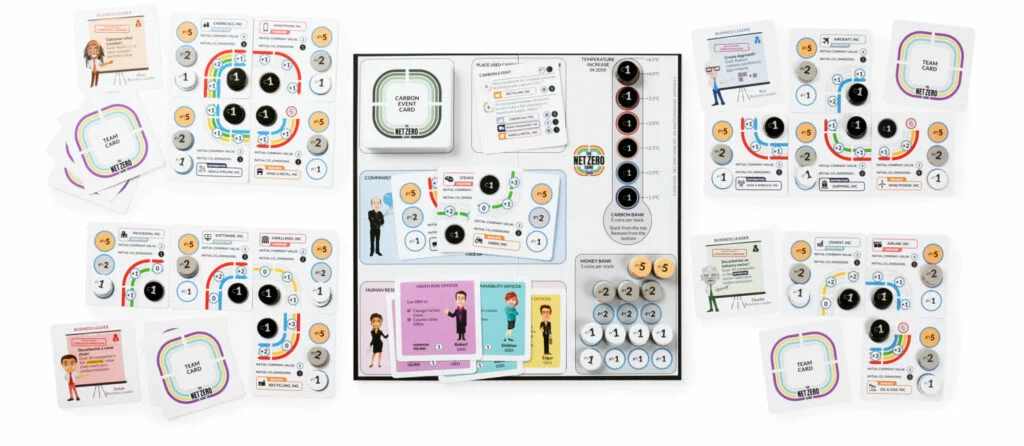
SDGs: Goal 12 Sustainable Consumption; Goal 17 Partnerships for the Goals
Players: 3-4 players
Format: Board Game
Target Group: children 14 years and above
Main Themes: Sustainable Consumption, Circular Economy, Carbon Neutrality
Net Zero is a business and strategy game where players take on the role of business leaders who are trying to achieve the net zero 2050 target.
In the words of the creators the objective for each business leader (gamer) is
‘to create a portfolio of net zero greenhouse gas emission companies considering value chains, synergies,selling and buying companies, reacting to carbon event news and deploying green executives.’
The game has six different modes and makes stem based issues in sustainability more sustainable and engaging for learners (even the box is made sustainability).
The game can be utilised in many different contexts and even comes with an interactive instruction plan which makes the game easier for teachers to implement without spending time familiarising themselves with rules. The game and associated resources are available for purchase online.
9. Peacemaker
SDGs: Peace Justice and Strong Institutions and Partnership For the Goals
Players: Single Player
Format: Digital Strategy Game
Target Group: Students aged 14 and above, adult learners
Main Themes: Peacebuilding War
This award winning game was inspired by the Israeli-Palestinian conflict where players can take on the role of either a Palestinian or Israeli leader and react to real life events with the aim of bringing peace.
The game has three levels of difficulty: calm,tense and violent and is won when both sides can come to a solution, however things are never as they seem as not even everyone on your own side is willing to make peace. The game is interactive and well paced providing a brilliant insight into the challenge of peacebuilding and conflict resolution.
The game is available on mobile and PC and can be downloaded from the Peacemaker website.
10. This War of Mine
SDGs: Good Health and Well being, Peace, Justice and Strong Institutions
Players: Single player
Format: War survival video game
Target Group: Aged 14 and above
Main Themes: Life during conflict, War and Poverty
“The game is inspired by true events of the poor daily living conditions and atrocities that civilians had to endure during the Siege of Sarajevo, the longest city siege in modern warfare history.”
This War of Mine was developed by Polish game developers 11 Bit Studio, the game takes the traditional war first person theme game and inverts it by allowing players to experience war from the perspective of civilians trapped in a fictional Polish city under siege. The goal of the game is to survive with the resources available to you and protect the ones you love.
What makes this game so distinct from other simulations is that characters’ moods affect their productivity highlighting how mental difficulties make these tough situations even harder for those going through conflict.
The game does a brilliant job of painting the real price of war on civilians and recently raised $850,000 towards the Ukrainian Red Cross to directly support victims in light of the ongoing war.
The game is available to download on PC and can be purchased from STEAM.
- For more in the gamification series check out Gamification – a short guide by Kai Evans.



